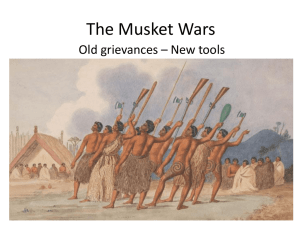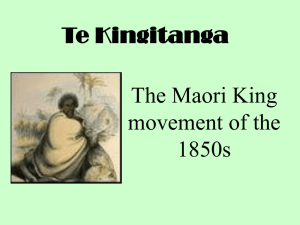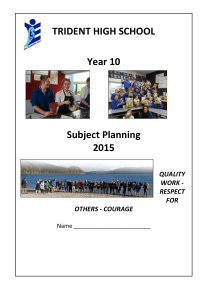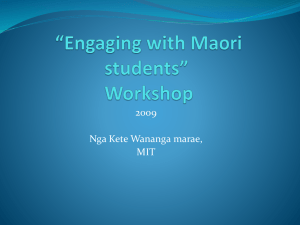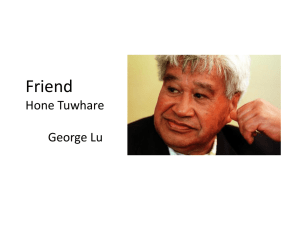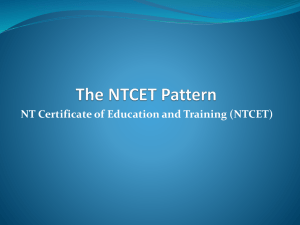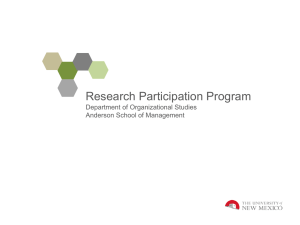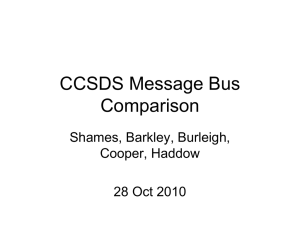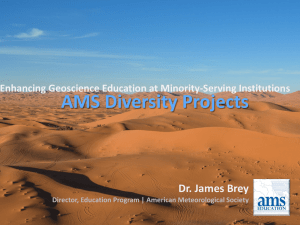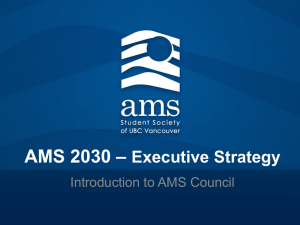Wanganui Girls* College
advertisement
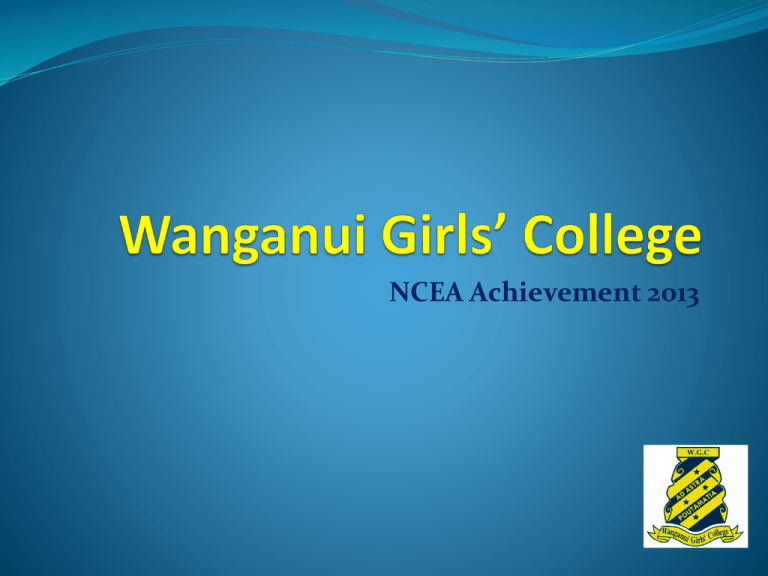
NCEA Achievement 2013 Putting it in context We strongly believe that using data to inform decisions is the key to enhancing success We tested our students on arrival at Year 9 using NZCER STAR We informed teachers of the stanine and made class and subject choices based on these results We started triangulating our data to predict Year 11 outcomes (STAR stanine and anecdotal knowledge about students) and predicted that students on stanine 5 and above should achieve NCEA level 1 We could then predict by whole cohort and Maori students the Year 11 outcomes These results and predictions were based on cohort not personalised to students We were challenged during an ERO visit about why we weren’t aiming for 100%! And why weren’t we - we asked ourselves? ERO’s advice was that the entry data should guide us with the number, type and range of interventions needed to get 100% pass rate for all students We were challenged to move beyond our self-fulfilling expectations – a light bulb moment! Wanganui Girls’ College 2012 Annual Plan A Successful School Leaver will have achieved at least NCEA Level 2 A safe, respectful, inclusive and positive learning environment The challenge was set! So…In 2012 one of our Board of Trustees strategic statements was that “A successful school leaver will have achieved at least NCEA level 2” Context / Activity Extensive school data compiled, reviewed and used for 2012 planning -of suitable options for students -allocation of teachers to classes -options offered and time allocated in Junior school What we know now Students working at STAR stanine 5 should achieve NCEA level 1 Students working at curriculum level 4 at Year 9 should be able to achieve NCEA Level 2 (MOE statement) 2011 Year 9 STAR completed and results available for SMT and teachers indicate cohort is strong in literacy (70% stanine 5 and above, Maori 72%) 2011/ 2012 Actions Responsibility Timeline Ascertain: What our current Year 9 and 10 academic profile is using -STAR at beginning and end of Year 9 -PAT maths at start of Year 9 and Year 10 compiled in school system -End of Year 9 and 10 grades compiled in school system Academic Dean with EO re data collation Academic Dean with EO re data collation By term 1 2012 Outcomes Review of 2012 Year 10 data show s our current students are strong in literacy. The Maths data indicates that student enter WGC with stanines below the national averages. Following discussions with HODs and staff Maths will have four periods per week at both Year 9 and 10 in 2012. This will be reviewed in 2012 to see if this has made any difference. In 2011 we had introduced our Academic Mentoring programme for senior students matching students to teachers that year; students met with two or three times a year with their allocated Academic Mentor around goal setting identifying barriers, checking progress and support and guidance In 2012 we were expanding this and we were also developing and embedding our SWPB4L work and RJ / RP work – a huge culture shift for staff We focussed on Year 11 as that was our most pressing need (ERO speak!) and … individual plans were developed to ensure all student work begun was completed the range of standards available for assessment were used to meet the student needs parents contacted by AMs to advise students were at risk of not passing study leave only after targets were met…. In term 3 2012 we set up large excel spreadsheet for each year level and each student was named, the number of students needing help identified and some strategies put in place to meet their needs – the three Ns! In term 4, just before study leave commenced, a letter was sent home for every senior student detailing: How many credits the student had How many credits were still available through external standards Literacy and numeracy and UE progress Remaining opportunities for completing outstanding assessments For any student deemed ‘at risk’, the letter was followed up with a telephone call. In 2012 the outcome for Level One was 89% pass rate – the highest in the town! 2013 An even more focussed approach: We provide more regular progress updates for SMT, Deans, HODs and AMs We have worked with HOD Learning Centre to develop alternative pathways where relevant We have regular, meaningful contact with parents We provide ongoing training for AMs on how to check progress for specific groups We have started to triangulate data in a more effective way – it is now on a much more personal level rather than cohort Increased accountability for staff as whanau, Form Teachers, students and AMs are regularly using the system to track progress Academic Mentoring Days Timetable suspended for whole school and 15 – 20 minute meetings arranged with students, whanau and AMs AMs received extensive training in weeks prior to meeting including how to use data to set targets; role playing difficult conversations; how to access information on NZQA website We arranged training, provided by Massey University, on having professional conversations with colleagues AMs negotiated agreed targets based on data provided We arranged future checkpoints to monitor targets Whanau, students and staff completed online and physical surveys about the effectiveness of the day Impressions of ART 13-17 Initially we didn’t quite grasp the purpose of this project and we were worried that there were hints of ‘Big Brother’… However, Vivianne went to session in Palmerston North, and I went to presentation by Rawiri at Wanganui City College and it all fell into place for us. We are very in favour of the idea of pathways; what works for us is really knowing our students, what their intentions are and ensuring the courses they are following fits into the pathway. The joy of a smaller school! The spreadsheet We do have some concerns about the spreadsheet as we seemed to be spending a lot of time presenting the data in a different way just for the sake of ‘the spreadsheet’ – so we now send Mary and Andrea our own version of the data. The spreadsheet does not have the facility to take into account outside providers. We found it difficult to calculate how many credits a student should be achieving in a particular week as courses are evolving and changing specifically because of the nature of this project. Gained Across All Years Lit L1 10 5 115 24 91 y 34 0 0 133 4 129 0 10 0 122 26 96 40 y 36 y 33 y 63 6 80 0 0 149 0 Kendahl Maori 12 128580407 39 59 11 59 0 6 135 14 121 Jess NZ European/Pakeha 12 125325367 57 45 11 61 0 0 117 4 113 Skylah Fijian 12 131562605 25 93 4 52 6 0 155 30 125 Siobhan Maori 12 126181103 22 77 4 60 0 0 141 23 118 Tara Maori 12 129177275 46 47 15 47 10 6 125 16 109 Holly NZ European/Pakeha 12 129555679 24 75 10 39 3 0 127 26 101 Lily-Jo Maori 12 129172018 47 69 15 45 0 0 129 10 119 Sarah Maori 12 128191112 48 60 10 54 0 0 124 12 Ella NZ European/Pakeha 12 126175107 45 71 9 38 6 0 124 Ashleigh NZ European/Pakeha 12 128547672 40 88 3 41 3 6 Tyme Maori 12 126181833 6 88 22 29 8 Brooke NZ European/Pakeha 12 126173691 37 67 8 25 Elise Maori 12 129554843 44 89 10 Eoana Maori 13 126517501 31 83 29 First Names Num L1 36 Credits in 2013 12 129196244 This Year Maori Ethnicity Kahurangi Gained Across All Years Gained Across All Years L2 + 115 Credits in 2013 37 Poss Ext 152 Credits in 2013 y 5 46 y 42 y Poss Total 99 Credits in 2013 42 E Int 141 Credits in 2013 y M Int 46 y Credits in 2013 108 A Int 16 Credits in 2013 y 112 56 y 54 y 50 y N Int y Credits in 2013 64 y 64 y 60 y 58 y NYA Int & Ext y Credits in 2013 89 y 74 y W Int & Ext 149 NSN Poss Int Ministry level 2 focus group 17th October 2013 y y y y y y y y y Identifying students Quantitative data Academic data from CM Attendance Pastoral (SWPB4L) Qualitative data Feedback from teachers and AMs Self-referral Sharing data with staff We have regular, calendared staff meetings to discuss and review academic progress of specific year groups Provide ongoing training in using MUSAC to acquire data We have a notice board in staffroom which is updated weekly Needs of students The needs depended entirely on individual stories Pathways (inappropriate choice of subject – HOD LC) Attendance (AM, Dean and Form teacher) Pastoral (Dean) Academic (AM) Strategies All students in the focus group have additional AMs who report to the Academic Dean weekly on progress (or lack of it….) Regular contact with home Ongoing liaison between AMs and subject teachers Holiday Pathways course incorporating study skills and career planning Dedicated section of NCEA notice board for the focus group – all teachers know who is in the group and the AMs involved Current position This time last year 32% of our students had already gained Level 2 NCEA We are currently sitting on 45% Insights Rigorous monitoring works Personalising works Knowing students works Sharing information produces increased sense of ownership among all staff Challenges Maintaining integrity of assessment conditions Teacher concern about losing academic integrity due to ‘credit harvesting’ MUSAC Establishing and maintaining meaningful communication with our Maori families Where to now? For 2014 AMs have already been given the opportunity to choose if they wish to stay with their current year level or move to the next year level with their group Our ASTRA programme will contain a more focussed unit on choosing pathways At the end of this year we will review and reflect on our current programme and adapt and improve our plan where necessary
